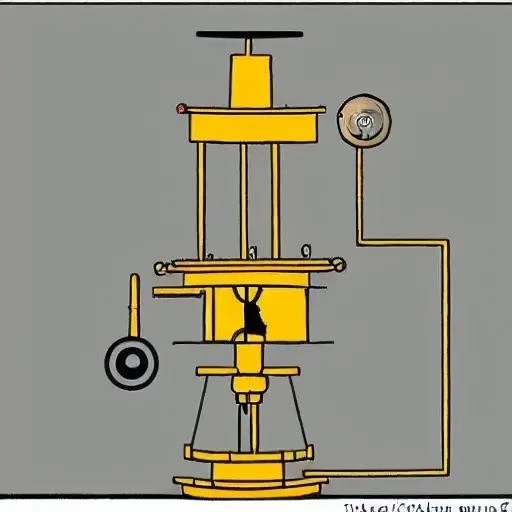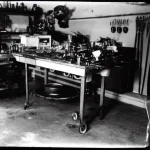In the relentless pursuit of automotive perfection, where every drop of fuel counts and every acceleration must be impeccably smooth, one unsung hero is quietly transforming the driving experience for millions. Often misunderstood, sometimes overlooked, the Continuously Variable Transmission (CVT) is emerging not just as an alternative, but as a remarkably sophisticated solution, meticulously engineered to deliver unprecedented efficiency and seamless power to your wheels. Forget the clunky shifts of yesteryear; the future of driving is here, and it’s gloriously uninterrupted.
For decades, traditional automatic and manual transmissions dominated the asphalt, dictating a fixed number of gear ratios that inherently compromised between raw power and fuel conservation. However, the CVT challenges this fundamental paradigm, offering an infinite spectrum of gear ratios, precisely adapting to every nuance of your journey. This innovative approach promises not only a significant boost in fuel economy but also an incredibly fluid, responsive driving sensation, redefining what we expect from our vehicles. By integrating cutting-edge materials and intelligent control systems, modern CVTs are driving unprecedented advancements in vehicle dynamics, proving themselves to be far more than just a passing trend.
Key Aspects of Continuously Variable Transmissions (CVT)
| Aspect | Description | Impact/Benefit |
|---|---|---|
| Continuous Gear Ratio | Unlike traditional transmissions with fixed gears, CVTs utilize two pulleys connected by a belt or chain, allowing for an infinite range of gear ratios. | Enables the engine to consistently operate at its most efficient RPM, maximizing fuel economy and minimizing emissions. |
| Seamless Acceleration | Eliminates the distinct “shifts” found in geared transmissions, providing a smooth, continuous power delivery. | Results in an incredibly fluid driving experience, free from jarring shifts, enhancing passenger comfort and reducing driver fatigue. |
| Enhanced Fuel Efficiency | By always keeping the engine in its optimal power band, CVTs significantly reduce fuel consumption compared to conventional automatics. | Offers substantial savings at the pump for consumers and contributes to lower carbon footprints for manufacturers. |
| Modern Advancements | Contemporary CVTs often feature advanced control software, simulated gear shifts, and improved durability through robust materials. | Addresses earlier criticisms regarding “droning” noises and perceived lack of engagement, delivering a more refined and enjoyable drive. |
| Prominent Manufacturers | Widely adopted by major automakers including Nissan, Toyota, Honda, Subaru, and Mitsubishi across a range of their most popular models. | Demonstrates widespread industry confidence and market acceptance, indicating the CVT’s pivotal role in mainstream automotive technology. |
The Ingenious Mechanics Behind the Magic
At its core, the CVT operates on a principle of elegant simplicity, yet its execution is a marvel of modern engineering. Imagine a sophisticated system consisting of two conical pulleys, each with variable diameters, connected by a robust metal belt or chain. As your car accelerates, one pulley’s diameter expands while the other contracts, continuously altering the effective gear ratio without any discrete steps. This ingenious design allows the engine to remain in its optimal power band, delivering maximum power with minimal fuel consumption. It’s akin to a bicycle with an infinite number of gears, always finding the perfect ratio for any speed or incline, ensuring the engine never struggles or over-revs. This constant optimization is where the CVT truly shines, translating directly into tangible benefits for the everyday driver.
Beyond Efficiency: The Driving Experience Reimagined
While fuel efficiency is a primary driver for CVT adoption, its impact on the driving experience is equally profound. Traditional transmissions, with their distinct gear changes, inherently introduce momentary interruptions in power delivery. The CVT, however, eliminates these pauses, offering an incredibly smooth and linear acceleration that many drivers describe as effortless. Imagine merging onto a highway or navigating city traffic with a car that responds with fluid precision, devoid of the familiar lurch or hesitation. This seamless power transfer not only enhances comfort but also provides a more refined, premium feel to the ride, elevating the daily commute into something genuinely enjoyable. Modern CVTs, powered by advanced software and robust hardware, have also largely overcome earlier criticisms regarding “droning” or perceived lack of driver engagement by incorporating simulated shift points that mimic traditional gear changes when spirited driving is desired.
Industry Adoption and the Road Ahead
The automotive landscape is rapidly evolving, with major manufacturers increasingly embracing CVT technology as a cornerstone of their vehicle lineups. Brands like Nissan, Toyota, Honda, and Subaru have invested heavily in refining and integrating CVTs into their most popular models, from compact sedans to versatile SUVs. Their widespread adoption is a testament to the CVT’s proven reliability, efficiency, and performance capabilities. Industry experts widely agree that as environmental regulations tighten and consumer demand for fuel-efficient, smooth-driving vehicles grows, the CVT’s role will only become more pivotal. By integrating insights from AI-driven control systems and continuously improving materials, engineers are pushing the boundaries of what these transmissions can achieve, promising even greater refinement and durability in the years to come.
Looking forward, the CVT is perfectly positioned to complement the rise of hybrid and electric powertrains. Its ability to keep the internal combustion engine (ICE) operating at peak efficiency makes it an ideal partner for hybrid systems, maximizing the benefits of both technologies. Even in fully electric vehicles, the principles of optimal power delivery and seamless torque management, pioneered by CVT development, are influencing the design of advanced single-speed and multi-speed EV transmissions. This forward-looking approach solidifies the CVT’s place not just as a current solution, but as a foundational technology contributing to the sustainable mobility of tomorrow.
Embrace the Smooth Revolution
The Continuously Variable Transmission is no longer just an engineering curiosity; it is a sophisticated, highly effective solution that is fundamentally reshaping our expectations of modern automobiles. Delivering unparalleled fuel economy, silky-smooth acceleration, and a driving experience that is both refined and responsive, the CVT stands as a powerful testament to innovation. It embodies a future where every journey is more efficient, more comfortable, and undeniably more enjoyable. So, the next time you’re considering a new vehicle, remember the quiet revolution happening under the hood. Embrace the seamless shift, and experience the future of driving today.






